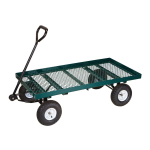Waynemarlow
10 kW
Hi, I have a need regularly for 240AC of about 1000 - 1200W's ( large drills and cut off saws ) where AC is not normally available. I could run a small generator but I have about 1600Wh's of 60V ( 14S ) lithium Ebike batteries that would do the job nicely if I could find a suitable 60 volt input AC invertor. Finding that relaible invertor @ 60 volts input has been illusive to date with the 2 purchased invertors all claiming 4000W's but both only running around 500W's max continuous.
Can anyone point me in the direction of a suitable invertor or has anyone used say a PV Panel / house setup with say 3 of the 58 volt batteries in series. If so has anyone tried going down this route and it has succeeded.
Perhaps getting the 58V down to 24V's where it seems there are a wider selection of invertors. How would one do that at the amps I'm talking about without to much heat and loss.
Open to ideas but a small carry box with the invertor and batteries in does sound attractive.
Thanks
Can anyone point me in the direction of a suitable invertor or has anyone used say a PV Panel / house setup with say 3 of the 58 volt batteries in series. If so has anyone tried going down this route and it has succeeded.
Perhaps getting the 58V down to 24V's where it seems there are a wider selection of invertors. How would one do that at the amps I'm talking about without to much heat and loss.
Open to ideas but a small carry box with the invertor and batteries in does sound attractive.
Thanks


